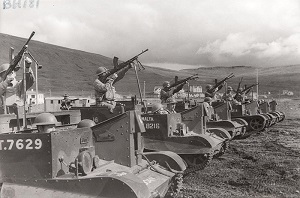 In my last post I questioned the domination of data and quantified shopper research, and outlined some of the key reasons why qualitative shopper research was perhaps not being used as much. Yet in the same way that qualitative research is valuable in the consumer realm, qualitative shopper research can be priceless for shopper marketers too. As the comments on last week’s post attest, qualitative work supports quantitative, by helping explain the story behind the numbers, and also indicating which numbers are worth collecting in the first place.
In my last post I questioned the domination of data and quantified shopper research, and outlined some of the key reasons why qualitative shopper research was perhaps not being used as much. Yet in the same way that qualitative research is valuable in the consumer realm, qualitative shopper research can be priceless for shopper marketers too. As the comments on last week’s post attest, qualitative work supports quantitative, by helping explain the story behind the numbers, and also indicating which numbers are worth collecting in the first place.
How do you the best out of qualitative shopper research?
Whilst this is not the time or place for a definitive guide to qualitative shopper research, what follows are a few key points to help marketers get the best out of their research funds when using qualitative techniques or a blend of both qualitative and quantitative.
Be realistic – As with any research, there is only so much that one study can deliver. Do not include elements in the research objectives that would unlikely be delivered due to lack of time, resources, or funds. Typically our knowledge of consumers has been built up over myriad studies: one or two shopper studies aren’t going to magically ‘catch up’ and tell you everything you need to know about shoppers
Be specific – Be clear about what it is that you want to learn, and be clear which answers are designed to come from which methodology. Often blends of different research methodologies are used in a single project, so to ensure that the qualitative elements add sufficient value, ensure it is clear which elements of the research brief are to be answered by qualitative shopper research. In my experience, this creates a sharper focus for the qualitative work, and allows the agency to be challenged if/when the qualitative work doesn’t get much airtime in the final presentation.
Be open – Shoppers will not tell you what drives their behavior. They might try, but unfortunately shoppers find it hard to break down. Whilst quantitative research (and this might be one of the reasons it is so popular) gives definitive answers, qualitative work gives tantalizing fragments. This is also what makes qualitative research so refreshing: it allows the marketer to use their experience to join the dots: to make the leaps of logic that separate insight from analysis. It’s also a lot more fun.
Be discerning – “The shopper says that she…” means exactly that. It means that is what the shopper said she does, or thought, not what she actually said or thought. Simple, obvious, but easily missed. Qualitative research reports are the researcher’s interpretation of the shopper’s interpretation of what actually happened and why. There is no need to find this wrong, or of lesser value than a data point from an observation. It’s ‘stuff’. That’s OK – as long as we don’t mistake interpretation for fact. It’s not the ‘stuff’ that makes a great marketer; rather what that great marketer does with it.
Be reflective – At the end of the project review what value came from which research and which methodology. Challenge your team to revisit work that yielded little value. If there is still nothing, remember that when the next flashy proposal comes in from the agency.
Qualitative research is important. It would be a shame if it dwindled or disappeared from the shopper marketing lexicon, drowned in a tsunami of Big Data. If I reflect on the work I have done in my career, I’ve found some fabulous opportunities in quantitative data; but the big breakthrough “wow” insights? They all came from qualitative input first.
If your experience in shopper marketing involved qualitative shopper research, feel free to share your thoughts on how to make the most out of shopper research in the comment section below!




